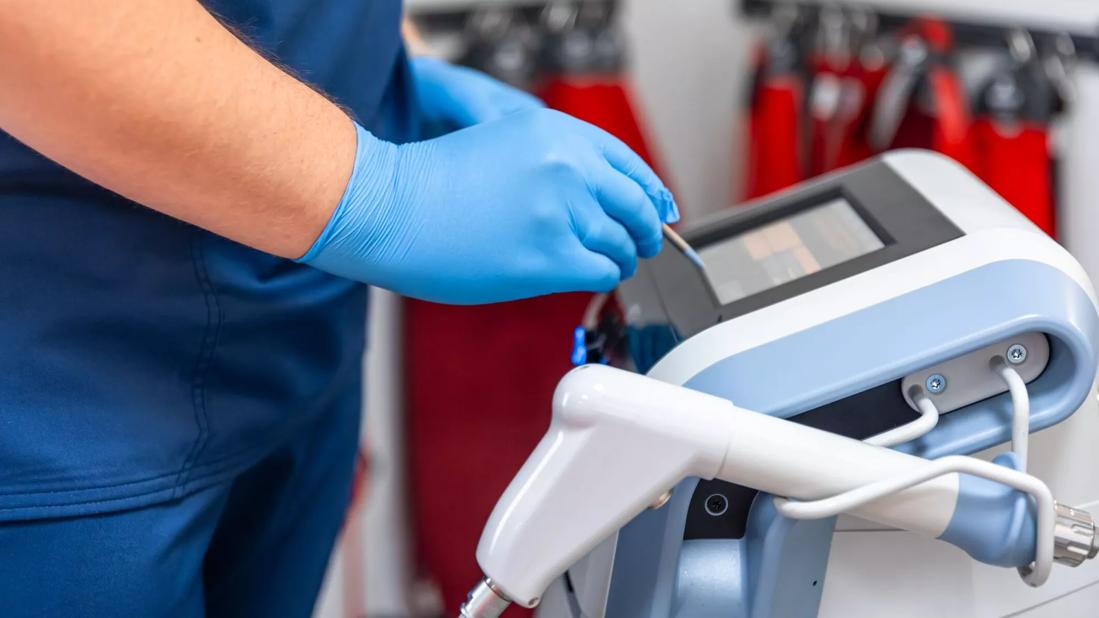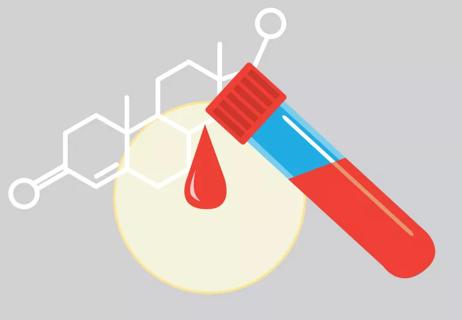Early results show the procedure may help resolve mild to moderate ED

Certain areas of your body are legendarily sensitive. So, it’s understandable if the idea of using something called “low-intensity shockwave therapy (LISWT)” to treat erectile dysfunction (ED) makes you squirm.
Advertisement
Cleveland Clinic is a non-profit academic medical center. Advertising on our site helps support our mission. We do not endorse non-Cleveland Clinic products or services. Policy
Shockwave therapy is a treatment method used to shatter kidney stones, after all. So, what will it do (and feel like) when aimed ... down there?
Urologist Petar Bajic, MD, has the answers.
Getting and maintaining an erection requires sufficient blood supply to your penis. Anything that limits that blood flow — such as cardiovascular disease and diabetes — can lead to less-than-firm results.
Research has shown that LISWT can restore and strengthen blood vessels in your penis to improve blood flow and make an erection … well, more erect.
“We’ve seen promising results using shockwave therapy to treat vascular ED,” states Dr. Bajic.
The healing power of LISWT has been evident for years in treating chronic non-healing wounds and tendon or ligament issues (such as plantar fasciitis). And, as mentioned earlier, urologists have long used LISWT to break apart kidney stones.
But shockwave therapy is a relatively new treatment when it comes to addressing ED, says Dr. Bajic.
LISWT is most often used to treat mild to moderate cases of vascular ED.
“I usually tell patients that if they get a good response to medication like sildenafil, more commonly known as Viagra®, they would be a reasonable candidate for shockwave therapy,” says Dr. Bajic.
Advertisement
Those who experience ED because of other reasons, including nerve damage or psychological causes, typically don’t respond to LISWT.
Some who undergo shockwave therapy for ED are able to get and maintain an erection without the use of medication (such as sildenafil). Others may find they still need to take that little blue pill but get better results.
“It’s not perfect,” clarifies Dr. Bajic. “I usually tell people there’s about a 75% chance they’ll get a benefit they’re satisfied with.”
LISWT involves a series of treatments that typically extend more than a month. Each treatment session lasts about 15 minutes. No anesthesia is necessary during the procedure, which is done with a wand-like device that delivers mild shockwaves to your penis.
And the effects of LISWT aren’t permanent. Treatment usually helps with ED for about a year or two, says Dr. Bajic.
A fair question, right? Well, here’s the good news: It’s typically a pain-free procedure.
“A lot of times when we do the treatment, people don’t even realize that it’s happening,” says Dr. Bajic. “And if somebody does feel a little discomfort in a particular area, we can reduce the energy a bit.”
The U.S. Food and Drug Administration (FDA) hasn’t approved the use of LISWT to treat ED. Organizations such as the American Urological Association (AUA) still classify it as an experimental treatment.
But many healthcare providers (including Cleveland Clinic) offer LISWT for erectile dysfunction.
The lack of FDA approval often means that health insurance won’t cover the cost of LISWT, making it an out-of-pocket expense. The treatment can be costly, with the average cost exceeding $3,000.
“The hope is the insurance situation will change in the future,” says Dr. Bajic. “But for now, it’s a pay-as-you-go procedure.”
Procedures advertised as “shockwave therapy” are often easy to find at direct-to-consumer men’s health clinics. But if you go this route, you might not be getting the treatment you think.
These clinics typically don’t offer LISWT. Instead, they use something known as radial wave therapy — which has been proven to be ineffective at resolving ED, emphasizes Dr. Bajic.
“Radial wave therapy is essentially a vibrator that doesn’t deliver nearly as much energy to the penis tissues compared to shockwave,” he explains. “The high energy from shockwave therapy is required to start the healing process which ultimately results in increased blood flow.”
Another reason to be wary? A 2022 review of clinics advertising “shockwave therapy” in eight U.S. cities found that 75% of the providers weren’t urologists. In addition, 13% of those administering shockwave therapy were not physicians.
Advertisement
“If you’re looking at shockwave therapy, it’s important to seek out care from an experienced provider,” advises Dr. Bajic.
Increased interest in using wave therapy for ED has managed to bring at-home devices into the marketplace. A big selling point is that the machines cost significantly less than clinic treatments.
But don’t be tempted to make this sort of self-care a DIY project, cautions Dr. Bajic. These machines use radial therapy, which — as mentioned — aren’t effective at addressing ED.
Plus, if you’re experiencing erectile dysfunction, it’s best to talk to a healthcare professional instead of trying to tackle it at home. ED can be a sign of more serious health concerns, including cardiovascular disease, and may even warn of a future heart attack.
“I always refer to it as the canary in the coal mine,” says Dr. Bajic. “If you’re experiencing ED, talk to your doctor about it — not only to get a pill or treatment for erections, but also to get an assessment to better understand what’s causing the issue.”
Although LISWT may work as a treatment for ED dysfunction in certain situations, remember, it’s just one of many options available. So, while it may be worth trying, it also might not be your best choice.
Advertisement
“With erectile dysfunction, there’s a tendency to look for just one solution to fix it,” says Dr. Bajic. “But the reality is every case is different. That’s why it’s important to talk to a healthcare professional to find what’s right for you.”
Advertisement
Learn more about our editorial process.
Advertisement

Adjusting your diet to focus on plant-based, whole foods may improve erectile function

Here’s what you need to know about ED, which most men experience to some degree during their lives

Research shows the virus can affect your ability to get or maintain an erection

Psychological factors are the main cause of ED in younger men, followed by medications and a range of health conditions

Despite assumptions, there really isn’t a one-to-one connection between the conditions

Learn the many causes of erectile dysfunction

An unexplained lump, swelling, discomfort or changes to your testicles shouldn’t be ignored

Spinal blocks provide complete numbing for shorter periods, while epidurals can allow for some feeling

Start having sex about 72 hours before ovulation, then at least every other day during your fertile window

Attachment theory suggests that your earliest relationships shape connections throughout your life

It isn’t a recognized mental health disorder, but research shows that problematic social media use can negatively affect your mental health, self-esteem and sleep